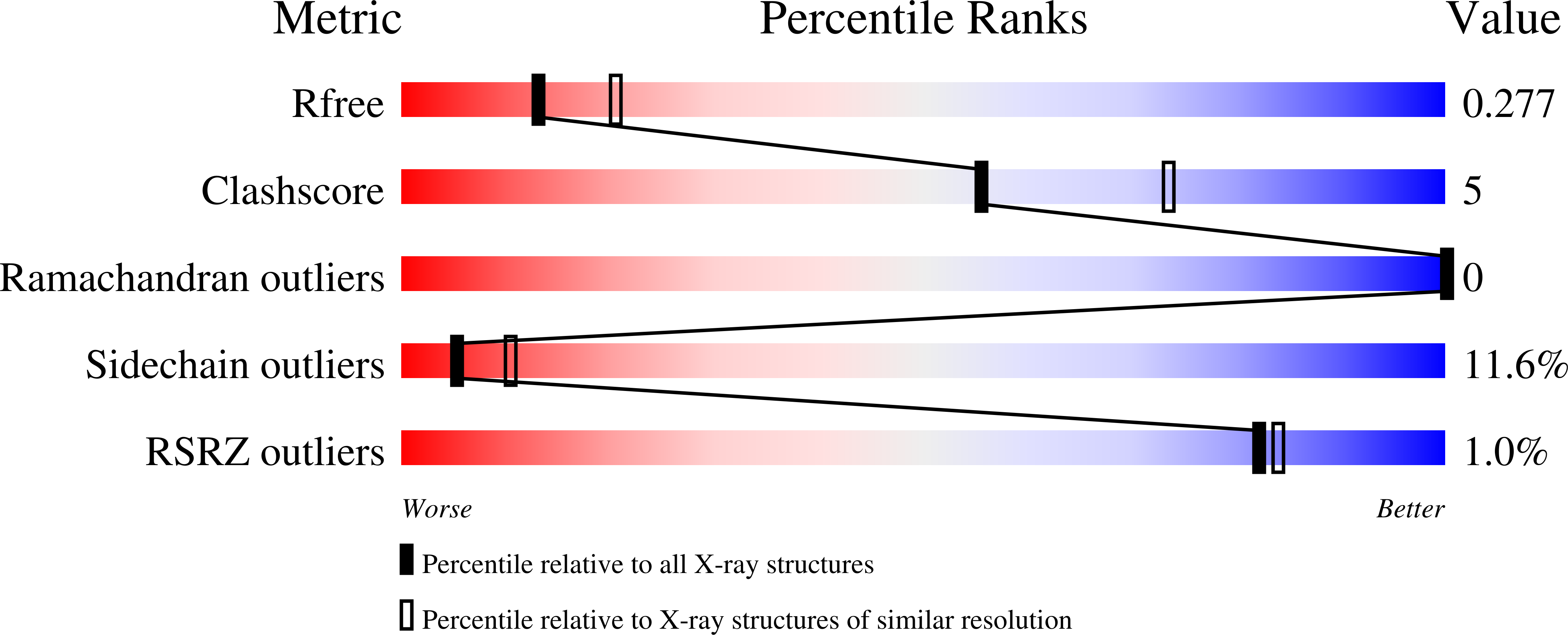Cyclic Nucleotide Mapping of Hyperpolarization-Activated Cyclic Nucleotide-Gated (HCN) Channels.
Moller, S., Alfieri, A., Bertinetti, D., Aquila, M., Schwede, F., Lolicato, M., Rehmann, H., Moroni, A., Herberg, F.W.(2014) ACS Chem Biol 9: 1128-1137
- PubMed: 24605759
- DOI: https://doi.org/10.1021/cb400904s
- Primary Citation of Related Structures:
4NVP - PubMed Abstract:
Hyperpolarization-activated cyclic nucleotide-gated (HCN) channels play a central role in the regulation of cardiac and neuronal firing rate, and these channels can be dually activated by membrane hyperpolarization and by binding of cyclic nucleotides. cAMP has been shown to directly bind HCN channels and modulate their activity. Despite this, while there are selective inhibitors that block the activation potential of the HCN channels, regulation by cAMP analogs has not been well investigated. A comprehensive screen of 47 cyclic nucleotides with modifications in the nucleobase, ribose moiety, and cyclic phosphate was tested on the three isoforms HCN1, HCN2, and HCN4. 7-CH-cAMP was identified to be a high affinity binder for HCN channels and crosschecked for its ability to act on other cAMP receptor proteins. While 7-CH-cAMP is a general activator for cAMP- and cGMP-dependent protein kinases as well as for the guanine nucleotide exchange factors Epac1 and Epac2, it displays the highest affinity to HCN channels. The molecular basis of the high affinity was investigated by determining the crystal structure of 7-CH-cAMP in complex with the cyclic nucleotide binding domain of HCN4. Electrophysiological studies demonstrate a strong activation potential of 7-CH-cAMP for the HCN4 channel in vivo. So, this makes 7-CH-cAMP a promising activator of the HCN channels in vitro whose functionality can be translated in living cells.
Organizational Affiliation:
Department of Biochemistry, University of Kassel , Heinrich-Plett-Straße 40, 34132 Kassel, Germany.
















